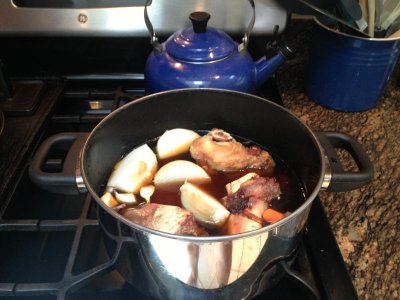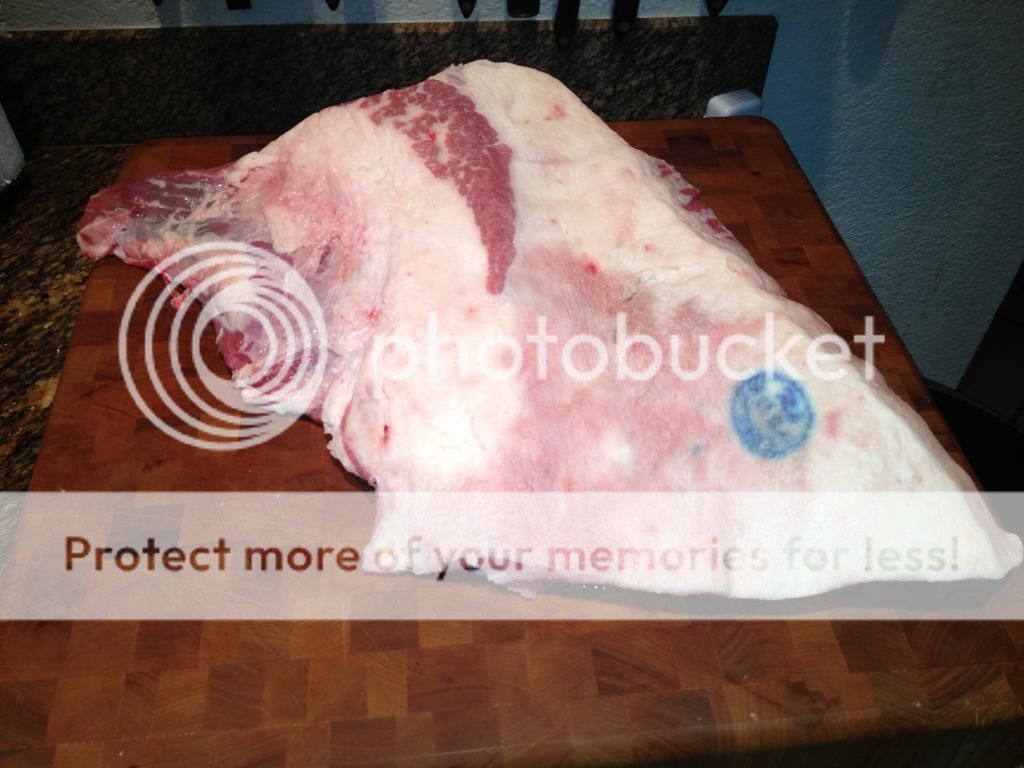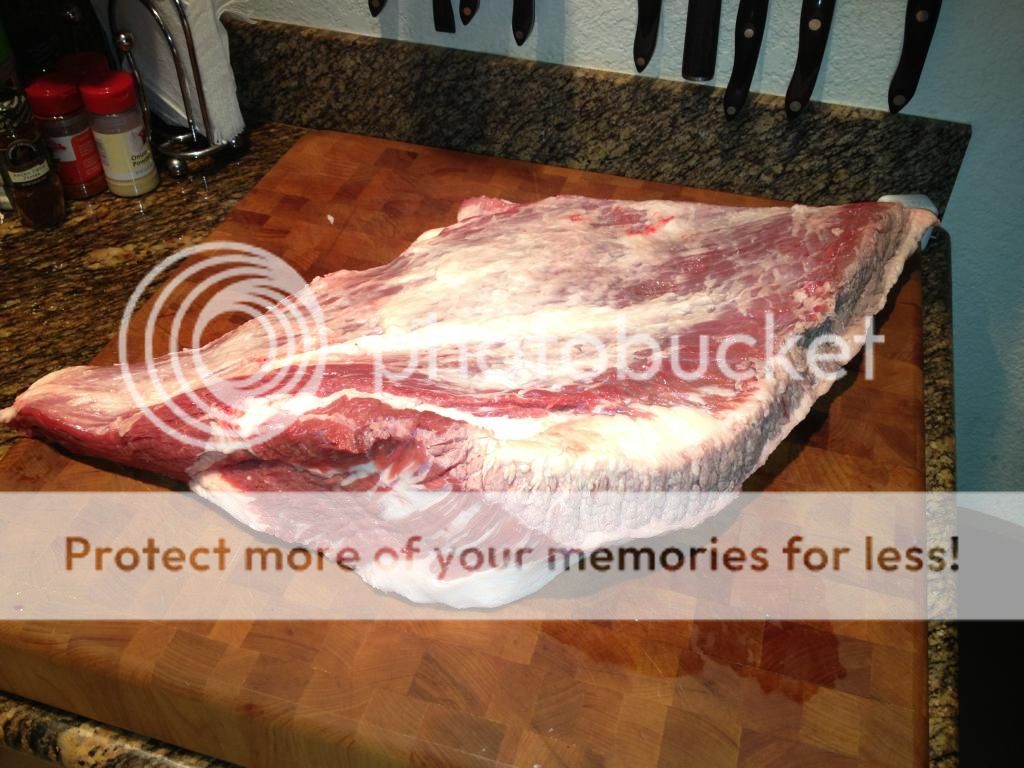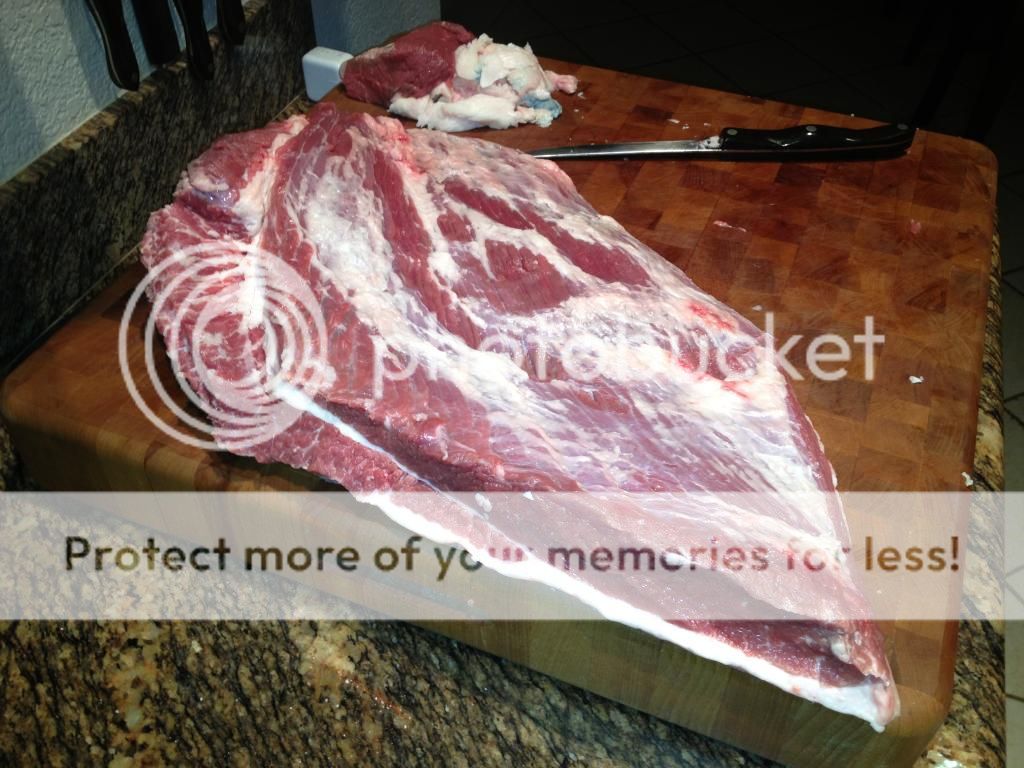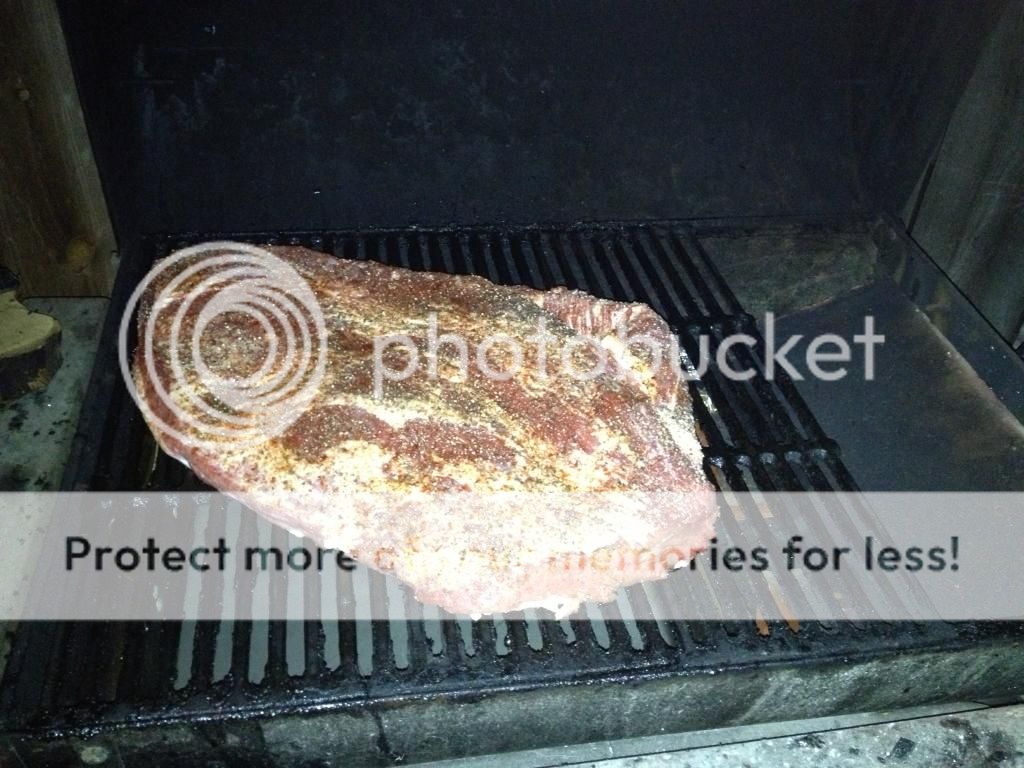voidecho
Full Fledged Farker
Sounds like I'm not the only one here trying to make a full packer brisket for the first time this weekend. I've made brisket flats several times, but have never had much success with them. They've never had much fat and they've all ended up dry.
Decided to try to whole thing this time. Picked up a Choice 12 pounder from the butcher. Still need to trim it down a bit. Like I said in the other thread I'm still not 100% sure how I'm going to prepare it, but I'm planning to try an injection for the first time.
I'm currently fortifying some beef stock. Bought some canned low sodium beef broth and I'm improving it by simmering some roasted beef bones, onions, carrots, garlic and black peppercorns.
I know the biggest thing is to watch my sodium levels. May add some Accent and worcestershire to the broth. If the injection is salty, I'll cut back on the rub. Probably going to just go simple on the rub with salt, pepper and garlic powder. We'll see, may add some other spices.
Plan to start smoking it late tonight at 225 or so (a mix of charcoal briquettes, mesquite lump charcoal and hickory chunks). I think I'm going to wrap it after a few hours and put some of the broth in the wrap as a braising liquid.
Hoping it'll take about 12 hours, but we'll see. Wish me luck.
More pictures to come as I work on it.
Decided to try to whole thing this time. Picked up a Choice 12 pounder from the butcher. Still need to trim it down a bit. Like I said in the other thread I'm still not 100% sure how I'm going to prepare it, but I'm planning to try an injection for the first time.
I'm currently fortifying some beef stock. Bought some canned low sodium beef broth and I'm improving it by simmering some roasted beef bones, onions, carrots, garlic and black peppercorns.
I know the biggest thing is to watch my sodium levels. May add some Accent and worcestershire to the broth. If the injection is salty, I'll cut back on the rub. Probably going to just go simple on the rub with salt, pepper and garlic powder. We'll see, may add some other spices.
Plan to start smoking it late tonight at 225 or so (a mix of charcoal briquettes, mesquite lump charcoal and hickory chunks). I think I'm going to wrap it after a few hours and put some of the broth in the wrap as a braising liquid.
Hoping it'll take about 12 hours, but we'll see. Wish me luck.
More pictures to come as I work on it.

